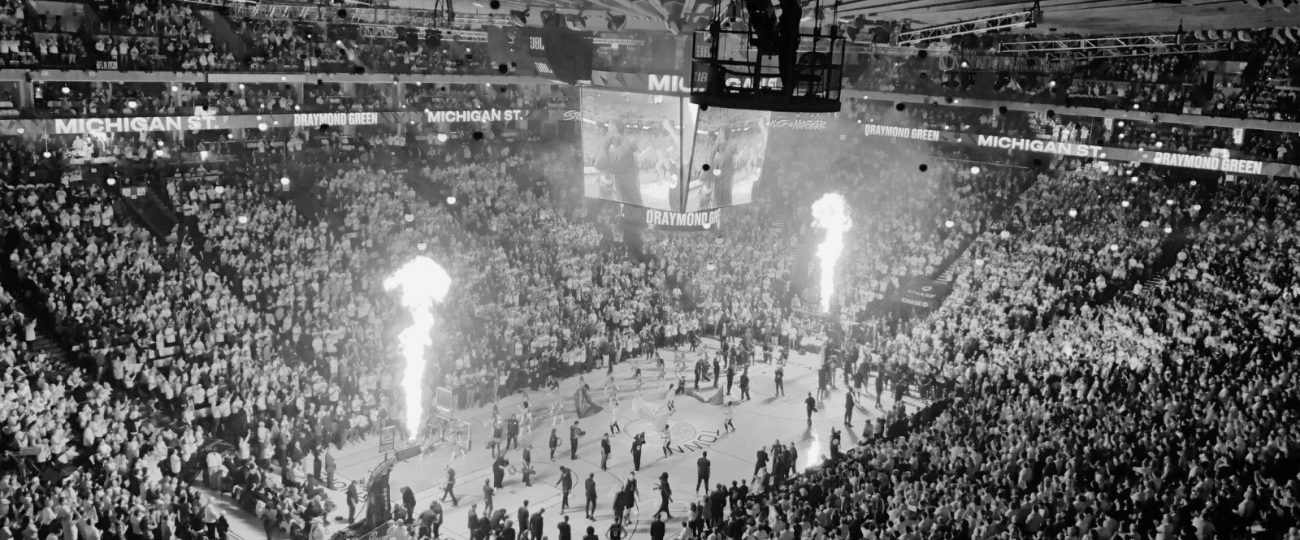What Happened On November 1st?
On November 1, 1946, the New York Knicks played the Toronto Huskies at Maple Leaf Gardens in Toronto. This game kicked off the Basketball Association of America (BAA), the precursor to the NBA. Around 7,090 spectators showed up for what was, at the time, a relatively low-profile event. The Knicks won 68-66 in a close, hard-fought game that would later become a significant moment in basketball history.
To increase attendance, the Huskies offered free entry to anyone taller than their 6-foot-8 center, George Nostrand, hoping to capitalize on the novelty of height. This promotion reflected the early struggle to popularize basketball among the public. Ticket prices were modest, ranging from 75 cents to $2.50, as the BAA worked to introduce the sport to a larger fan base and differentiate it from more established sports like baseball.
Knicks guard Ossie Schectman made history by scoring the NBA’s first points with a layup. At that time, the game moved at a much slower pace, focusing heavily on passing and set plays. Without the three-point line or shot clock, teams relied on mid-range and close-range shooting. Many games ended with low scores, as stalling tactics became common once a team took the lead.
Physicality ruled the paint, especially with players like George Nostrand and Sonny Hertzberg clashing for position under the basket. Rebounding was critical, and every possession felt like a battle for control. The game’s rough nature extended beyond just the physical play, as players wore basic canvas sneakers and played on hardwood courts that lacked the padding or advanced technology seen today.
Walter A. Brown, the manager of the Boston Garden, played a key role in creating the BAA. Brown, along with other arena owners, wanted to fill their venues during the slow winter months. Their vision involved bringing basketball to major cities like Boston, New York, and Philadelphia. They aimed to separate their league from smaller regional leagues by capitalizing on these urban markets and attracting a larger audience, a strategy that was crucial for its early survival.
Despite these ambitions, the BAA’s early days were filled with struggles. The Toronto Huskies, despite hosting the league’s first game, folded after only one season due to financial difficulties. The high costs of travel, low attendance, and a lack of widespread interest in professional basketball made it hard for teams to stay afloat. The BAA faced stiff competition from the more established National Basketball League (NBL), which had a firmer grip on the sport’s professional landscape at the time. The two leagues remained rivals until they merged in 1949, forming the NBA.
In the absence of a shot clock, games frequently slowed to a crawl after a team took the lead. Coaches would instruct players to pass the ball endlessly in order to run out the clock, which made many games frustrating for fans. This issue wasn’t resolved until 1954, when the NBA introduced the shot clock, fundamentally changing the flow of the game and forcing teams to remain aggressive on offense.
Ossie Schectman, who scored the first points in BAA history, had a short career in the league, playing just one season. Afterward, he moved to the American Basketball League (ABL), a smaller league at the time. Salaries for professional basketball players were low, forcing many of them to take up additional work outside of basketball. Professional basketball had not yet reached the point where players could rely solely on the sport for financial stability.
The BAA also faced issues with media exposure. The first game wasn’t televised, and very few radio stations covered it. Fans relied on newspapers for scores and updates, leaving basketball with a much lower profile than sports like baseball and football. This lack of exposure made it challenging for the BAA to build a substantial fan base during its early years.
The rules of the game in the 1940s were markedly different from those of today. Goaltending had only recently been banned, allowing players to swat away shots directly over the rim. The lane, or “key,” was much narrower than it is now, giving taller players more freedom to dominate near the basket. This rule particularly benefited big men, who often controlled the game with their size and strength. As the sport progressed, the lane was widened to limit this dominance and make the game more balanced for players in all positions.
Several early BAA teams faced financial instability, similar to the Toronto Huskies. The league operated on tight margins, and many franchises were forced to fold or relocate. Only a few teams, such as the Knicks and the Boston Celtics, survived the league’s difficult beginnings. When the BAA and NBL finally merged in 1949, it brought stability and allowed professional basketball to grow into the more structured league we recognize today.
Despite the lack of fanfare, that first game in Toronto set the foundation for professional basketball as we know it. The modest crowd and minimal media attention didn’t hint at the NBA’s future success, but the game itself was a crucial step toward building the sport. The game may have been simple, but it laid the groundwork for a league that would eventually captivate audiences worldwide.





